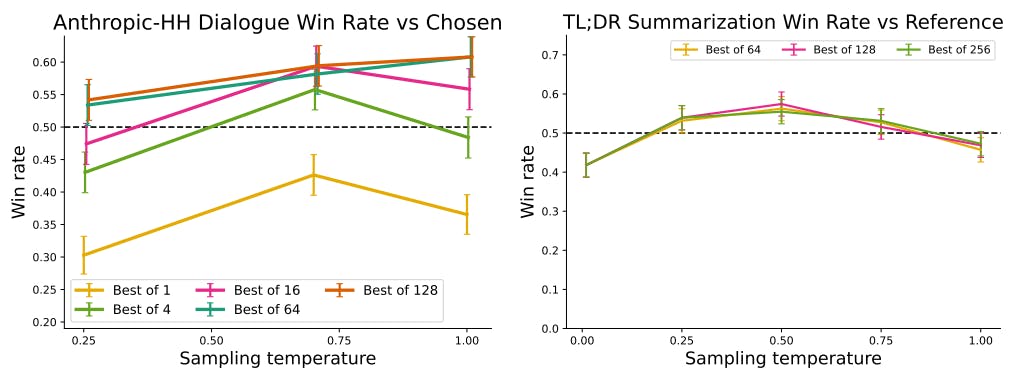Authors:
(1) Rafael Rafailo, Stanford University and Equal contribution; more junior authors listed earlier;
(2) Archit Sharma, Stanford University and Equal contribution; more junior authors listed earlier;
(3) Eric Mitchel, Stanford University and Equal contribution; more junior authors listed earlier;
(4) Stefano Ermon, CZ Biohub;
(5) Christopher D. Manning, Stanford University;
(6) Chelsea Finn, Stanford University.
Table of Links
4 Direct Preference Optimization
7 Discussion, Acknowledgements, and References
A Mathematical Derivations
A.1 Deriving the Optimum of the KL-Constrained Reward Maximization Objective
A.2 Deriving the DPO Objective Under the Bradley-Terry Model
A.3 Deriving the DPO Objective Under the Plackett-Luce Model
A.4 Deriving the Gradient of the DPO Objective and A.5 Proof of Lemma 1 and 2
B DPO Implementation Details and Hyperparameters
C Further Details on the Experimental Set-Up and C.1 IMDb Sentiment Experiment and Baseline Details
C.2 GPT-4 prompts for computing summarization and dialogue win rates
D Additional Empirical Results
D.1 Performance of Best of N baseline for Various N and D.2 Sample Responses and GPT-4 Judgments
Additional Empirical Results
D.1 Performance of Best of N baseline for Various N
We find that the Best of N baseline is a strong (although computationally expensive, requiring sampling many times) baseline in our experiments. We include an evaluation of the Best of N baseline for various N for the Anthropic-HH dialogue and TL;DR summarization; the results are shown in Figure 4.
D.2 Sample Responses and GPT-4 Judgments
In this section, we present examples of comparisons between DPO and the baseline (PPO temp 0. for summarization, and the ground truth chosen response for dialogue). See Tables 4-6 for summarization examples, and Tables 7-10 for dialogue examples.
This paper is available on arxiv under CC BY-NC-ND 4.0 DEED license.


